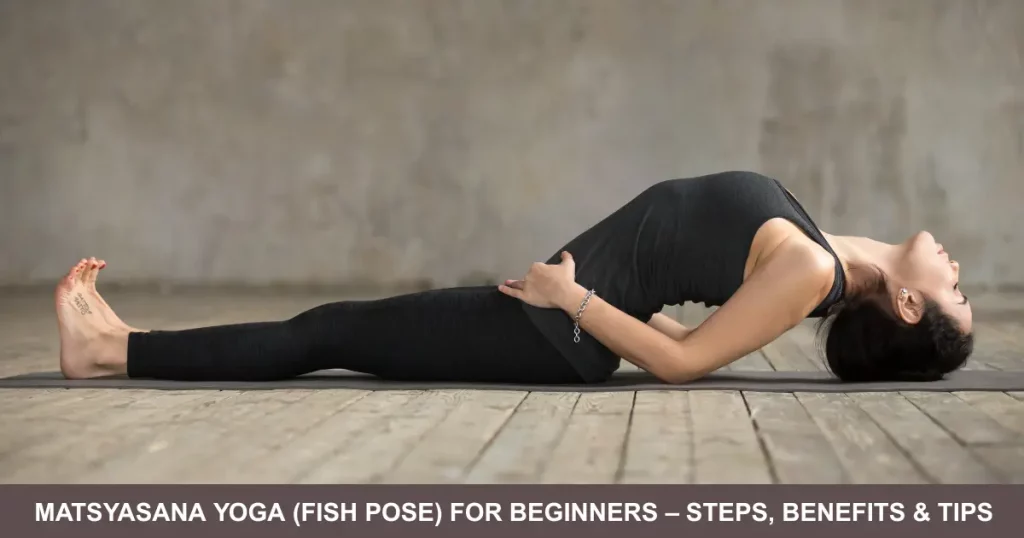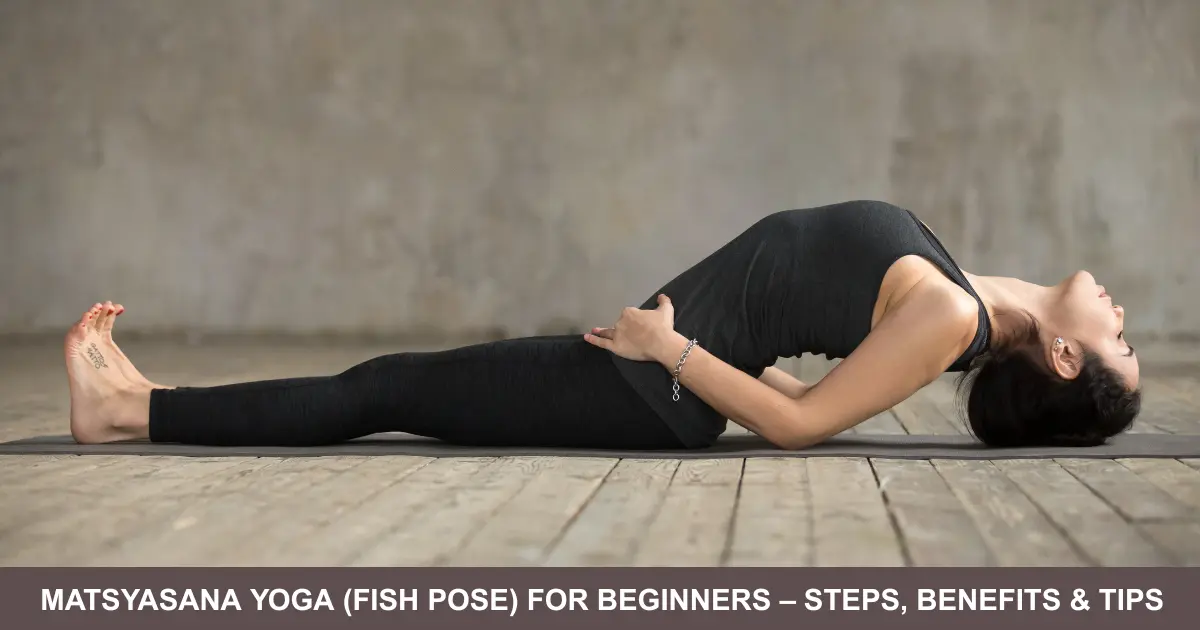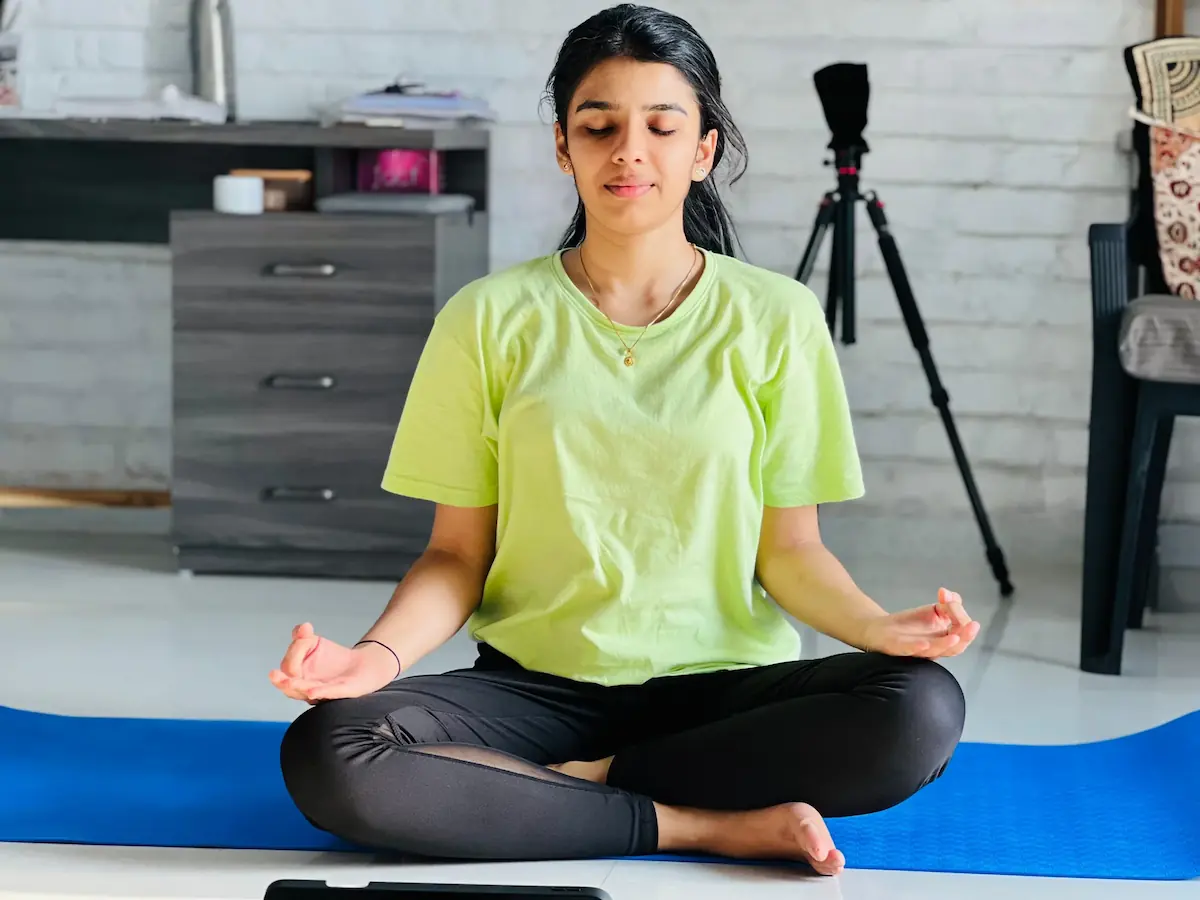Matsyasana, or Fish Pose, is a heart-opening backbend that gently stretches the chest, neck, and spine while boosting breathing and posture. Ideal for beginners when done mindfully, this pose brings balance to both body and mind. Let’s explore how to do Matsyasana, its powerful benefits, safety tips, and variations for all levels.
Who Can Practice Matsyasana and When?
Who can do it:
- Beginners with basic flexibility
- People seeking better posture or respiratory health
- Anyone wanting to relax the upper body and improve digestion
Who should avoid:
- Individuals with neck/spine injuries, hernia, high/low blood pressure, glaucoma, or migraines
- Pregnant women or those recovering from abdominal/back surgery
Best time to do:
- On an empty stomach, preferably in the morning
- After warm-up or inversions like Shoulderstand (Sarvangasana)
- As part of your cool-down or chest-opening sequence

How To Do Matsyasana Step-by-Step
Sanskrit Name: Matsyasana
English Name: Fish Pose
Step-by-Step Instructions:
- Start Position:
Lie flat on your back on a yoga mat. Keep your legs straight and arms beside your body, palms down. - Hand Placement:
Slide your hands under your buttocks with palms facing down. Elbows stay close to your torso. - Lift the Chest:
Press into your forearms and elbows. Inhale as you lift your chest toward the ceiling, arching your back gently. - Head Placement:
Tilt your head backward and rest the crown of your head lightly on the mat. Avoid putting full weight on your head most support should come from your arms. - Legs Option:
- Beginner: Keep legs extended or slightly apart.
- Intermediate: Cross legs in Padmasana (Lotus Pose) if comfortable.
- Hold the Pose:
Stay in the posture for 30 seconds to 1 minute. Breathe deeply and keep your eyes closed for inner calm. - To Release:
Gently lift your head, lower your chest, and relax your body flat on the mat.

Key Benefits of Practicing Matsyasana Daily
- ✅ Opens the chest and lungs, improving breathing capacity
- ✅ Enhances posture and relieves rounded shoulders
- ✅ Stimulates thyroid and pituitary glands
- ✅ Eases tension in the neck, back, and shoulders
- ✅ Boosts digestion and metabolic function
- ✅ Improves blood circulation and energizes the body
- ✅ Reduces stress, anxiety, and fatigue
- ✅ Helps with insomnia and promotes better sleep
Common Mistakes to Avoid
- Forcing the neck back without arm support
- Overarching the lower back
- Holding the breath
- Not engaging the core muscles
- Skipping counterposes like Shavasana or Knees-to-Chest Pose
Short Routine Plan for Daily Practice
- 🔹 Perform 1-2 rounds daily
- 🔹 Hold each round for 30-60 seconds
- 🔹 Follow with counterposes like Pawanmuktasana (Wind Relieving Pose)
Modifications and Tips for Beginners
- Use a yoga block or folded blanket under your upper back for extra support
- Avoid lifting legs or doing Padmasana variation until you’re more flexible
- Support your neck using a soft towel roll if you feel strain
- Practice under a certified yoga teacher if you’re recovering from an injury
Variations of Matsyasana (Fish Pose)
- Supported Fish Pose: Use props to relax the spine gently
- Padmasana Fish Pose: Advanced version combining Lotus and Fish Pose
- Interlocked Fingers Variation: Enhances back muscle engagement
- Bolstered Fish Pose: Boosts relaxation and spinal lengthening
- Matsyasana in Sukhasana (Easy Pose): Gentle variation for beginners
- Crossed-Arms Fish Pose: Deepens shoulder opening
- Toe-Holding Fish Pose: Builds deeper flexibility and chest expansion
Matsyasana Contraindications
Avoid this pose if you suffer from:
- Severe neck or back pain
- High/low blood pressure
- Migraine or glaucoma
- Pregnancy or recent surgery
- Hernia or spondylosis
Always consult your doctor or yoga therapist before practicing if you have any chronic conditions.
Read More: The Magic Of Balasana: Why Every Yogi Loves Child’s Pose
Frequently Asked Questions (FAQs)
1. What does Matsyasana mean?
Matsyasana comes from the Sanskrit word “Matsya” meaning fish. The pose mimics a fish floating with an arched spine, promoting grace and calmness.
2. Is Matsyasana safe for beginners?
Yes, when done with support (blocks, rolled blankets), it is safe and effective for beginners.
3. Can this pose help with breathing problems?
Absolutely! It opens the chest and lungs, making it helpful for asthma and respiratory function.
4. How long should I hold Matsyasana?
Start with 30 seconds and work your way up to 1–2 minutes.
5. Should I perform it daily?
Yes, daily practice can improve posture, reduce tension, and boost overall wellness.
6. Can I do Matsyasana during pregnancy?
No, it’s not recommended due to pressure on the abdomen and lower back.
Conclusion: Why Add Matsyasana to Your Daily Practice?
Matsyasana is a gentle, powerful heart-opener that benefits your posture, breathing, and energy. Whether you’re a beginner or an experienced yogi, this pose can uplift your physical and emotional health with just a few mindful minutes a day.
Start slow, breathe deeply, and always listen to your body. As always, if you’re trying this pose for the first time, consider guidance from a certified yoga teacher.

